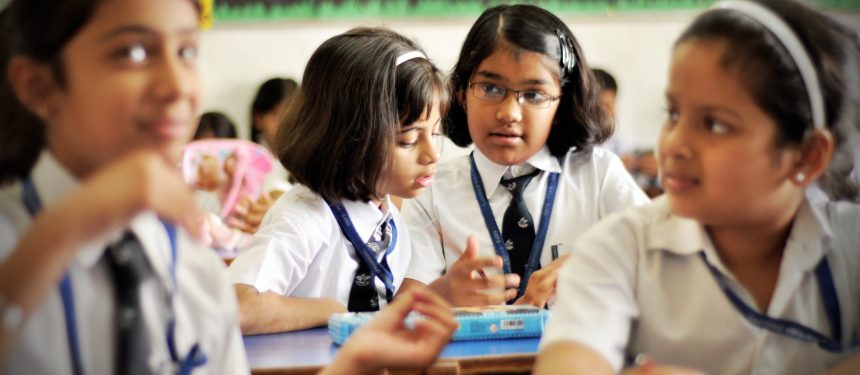The number of students at English-medium K-12 international schools in India has increased by 70% over the past five years, according to ISC Research, with further growth expected as the economy continues to flourish and more families want to prepare their children for higher education overseas.
News and business analysis for Professionals in International Education
Have some pie!
India’s international school enrolments surge 70%
 Around three quarters of pupils in mid-fee range international schools in India are local. Photo: British Council India.
Around three quarters of pupils in mid-fee range international schools in India are local. Photo: British Council India. The number of students being taught at English-medium K-12 international schools now totals 268,600 – up from 151,900 five years ago, according to ISC Research’s latest market report for India.
Meanwhile, the number of schools has also significantly increased over the same time period, from 313 in 2012, to 469 this year.
“One thing we’ve particularly noticed this year is a large growth in local traffic originating from within India”
The international schools market in India has been a fledgling one, particularly in comparison with more developed markets in the Middle East.
“It is only since the early 1990s that India’s economy has been shifting towards a free-market system, with more foreign trade and investment,” the ISC report states.
Now with one of the world’s fastest-growing economies, the increase in interest and ability for parents to invest in their children’s education has magnified.
“There is a surge in demand from affluent, upwardly-mobile Indian families for an international-oriented curriculum for their children with the necessary repertoire of skills to successfully pursue higher education and professional careers outside of India,” said Scott Cherry, senior report writer at ISC Research.
Three quarters of students who attend international schools with mid-range tuition fees (between $4,000 and $10,000) are local Indian children, while this demographic accounts for less than half (43.5%) of enrolments at schools with fees starting at $10,000 and going up.
The remaining students are expatriates, primarily from the US, South Korea and the UK.
Carolyn Savage, head of international education at Winter’s International School Finder, said the English-medium school search platform has noticed an uptick in demand for international schools in India.
“One thing we’ve particularly noticed this year is a large growth in local traffic originating from within India, with large numbers of local parents contacting us looking for international schools both inside India and globally,” she commented.
And one of the main motivations for this international education is the internationally-recognised qualifications, which can “open doors to esteemed universities around the world”, said Savage.
“The preferred curriculum is the International Baccalaureate, closely followed by the British curriculum.”
Despite this boom in demand, it has not outweighed the current supply.
While the enrolment rate of international schools in India varies slightly depending on school tuition prices, those with fees over $10,000 have filled 81.6% of their capacity. International schools priced between $4,000 and $10,000 are 79% full.
However, at the market’s current growth rate of 11.2%, capacity is expected to be met in four years, according to Cherry.
Tier one cities in particular have benefitted from the growth in international schools.
“Getting the right teachers makes a significant difference to ensuring enrolment growth”
However, a number of imposter institutions are taking advantage of the new surge in interest and are just adding the word ‘international’ to their names, said Anuradha Monga, chair of the The Association of International Schools of India.
“We must examine, though, the reasons for this sudden shift to a foreign, more expensive education. International schools are subject to reviews by accreditation bodies and hence are compelled to maintain levels of effectiveness in every aspect of the school system,” she said.
And like most international schools around the world, recruiting skilled teachers remains a challenge for Indian providers, according to Nalini Cook, head of Middle East and India research at ISC Research. Mid-market schools, where lower fees mean less money for teacher salaries, find it particularly difficult.
“Getting the right teachers makes a significant difference to ensuring enrolment growth which is why premium schools are prepared to pay the highest salaries,” she said.
“Mid-market schools will have to be creative in their teacher offerings, incentives and demographics.”
Still looking? Find by category:



Hello, yeah this article is in fact pleasant and I
have learned lot of things from it regarding blogging.
thanks.